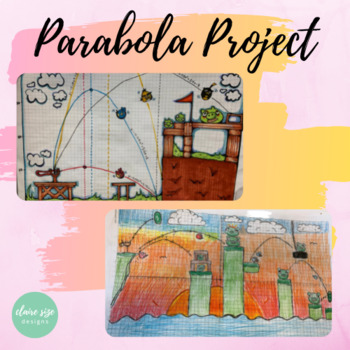Parabola Project: Angry Birds
clairesize designs
9 Followers
Grade Levels
6th - 12th, Higher Education
Subjects
Resource Type
Standards
CCSSHSA-APR.A.1
CCSSHSA-CED.A.1
CCSSHSA-CED.A.2
CCSSHSA-REI.A.1
CCSSHSA-REI.B.4
Formats Included
- Zip
Pages
20 pages
clairesize designs
9 Followers
What educators are saying
I modified the project a bit. Students enjoyed working on it. By the end of the project they had a good handle on solving and graphing quadratics!
This project was AMAZING! I have never seen my students so engaged in a project! The finished products were beautiful! The rubric, directions, and resources were so easy to follow. I will definitely be coming back to this store for more projects! Thank you!
Description
Wanting an awesome parabola project which engages students and shows off their creativity AND math learning? This Parabola Project is based off the game, Angry Birds! Students are required to find "flight paths", or equations for SIX birds! Students show math work moving from vertex form to standard form. As well, students use the Quadratic Formula (or any other method) to find their zeros/roots of each equation! What an inspiring way to combine parabolas and art!
Included with the project is a "Pre-Angry Birds Activity" that discusses moving from vertex to standard form.
I do not own the rights to "Angry Birds". It is merely a relationship to parabolas utilized in an academic manner.
Total Pages
20 pages
Answer Key
Included
Teaching Duration
1 Week
Last updated May 2nd, 2022
Report this resource to TPT
Reported resources will be reviewed by our team. Report this resource to let us know if this resource violates TPT’s content guidelines.
Standards
to see state-specific standards (only available in the US).
CCSSHSA-APR.A.1
Understand that polynomials form a system analogous to the integers, namely, they are closed under the operations of addition, subtraction, and multiplication; add, subtract, and multiply polynomials.
CCSSHSA-CED.A.1
Create equations and inequalities in one variable and use them to solve problems.
CCSSHSA-CED.A.2
Create equations in two or more variables to represent relationships between quantities; graph equations on coordinate axes with labels and scales.
CCSSHSA-REI.A.1
Explain each step in solving a simple equation as following from the equality of numbers asserted at the previous step, starting from the assumption that the original equation has a solution. Construct a viable argument to justify a solution method.
CCSSHSA-REI.B.4
Solve quadratic equations in one variable.




